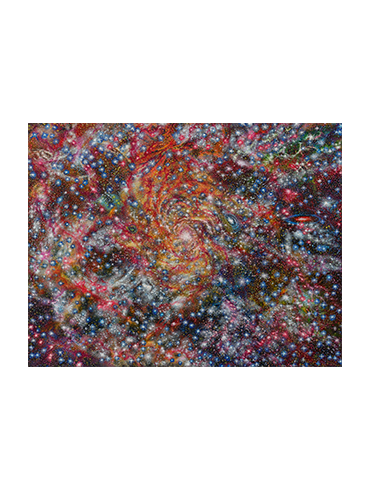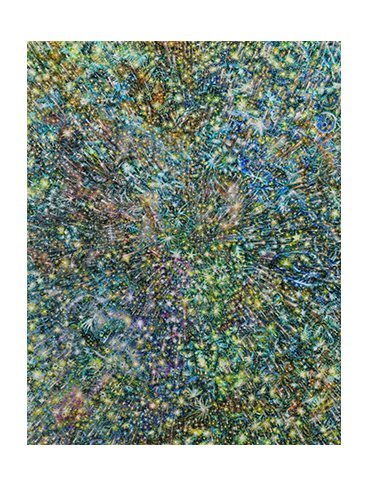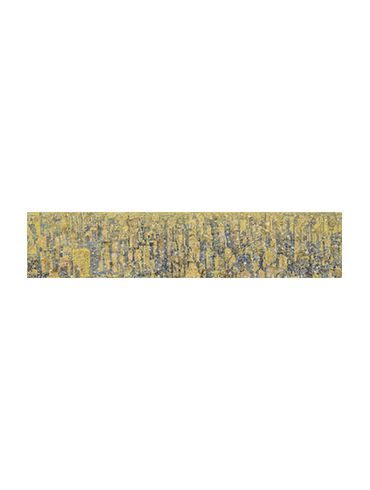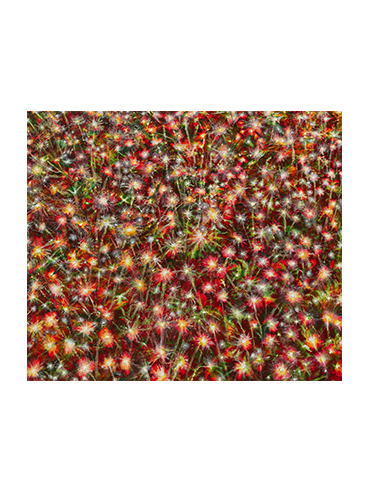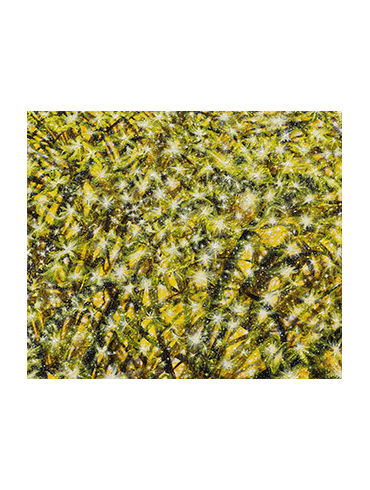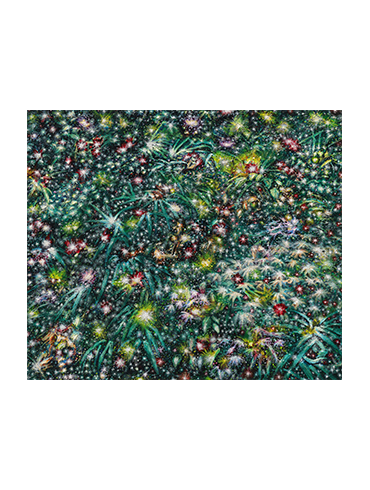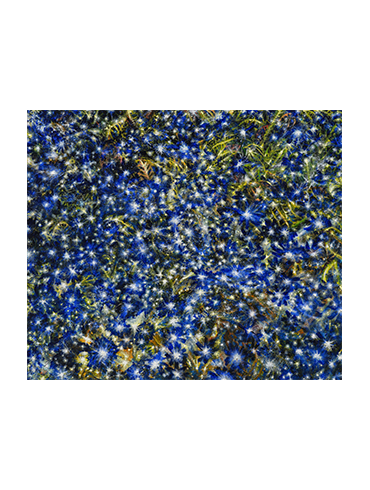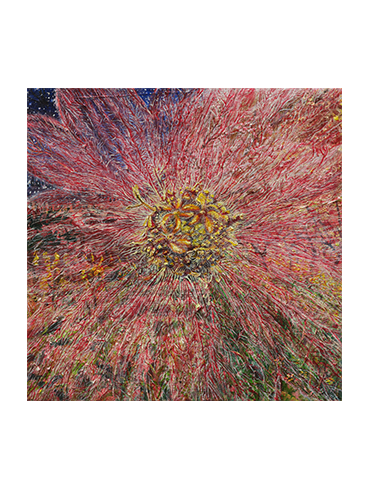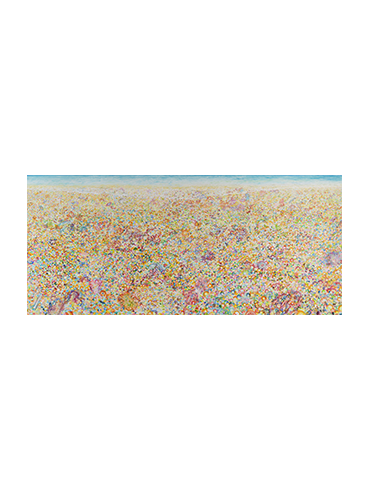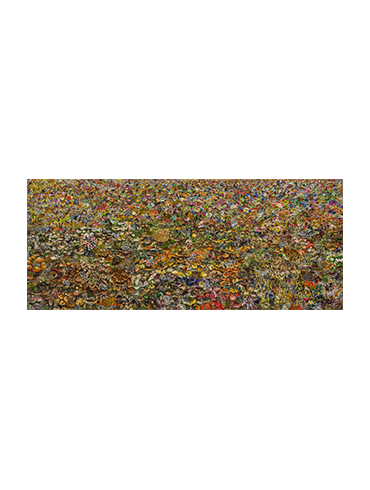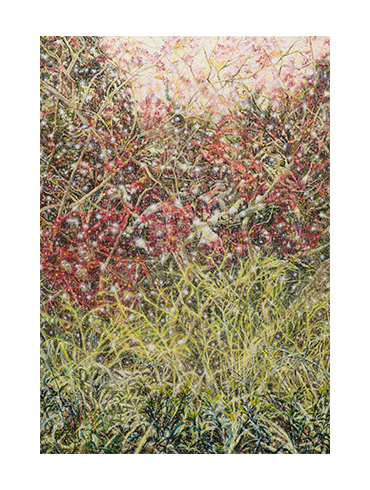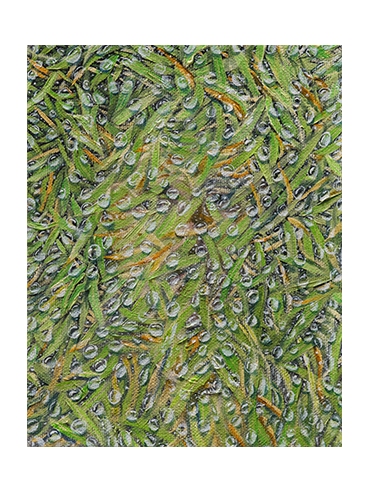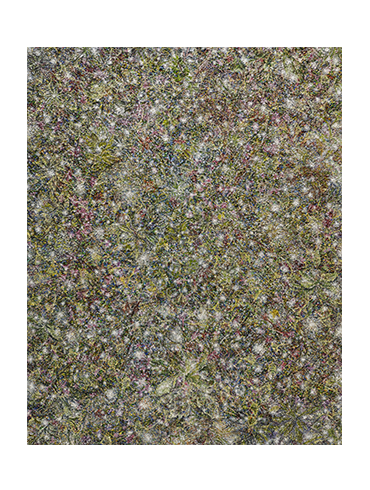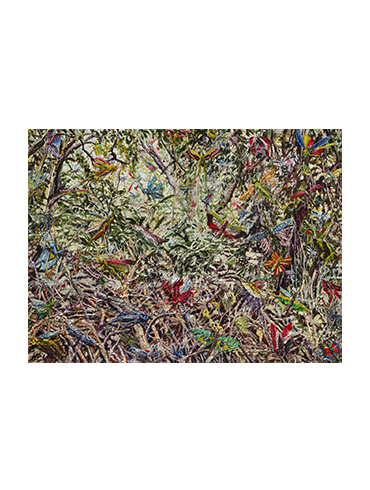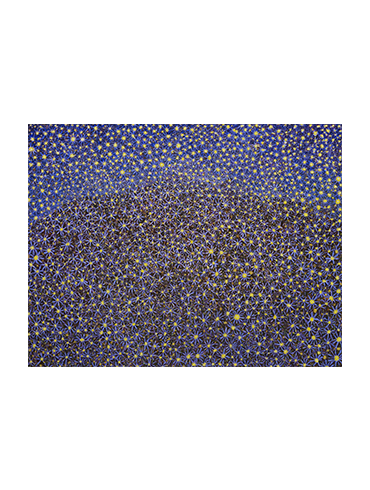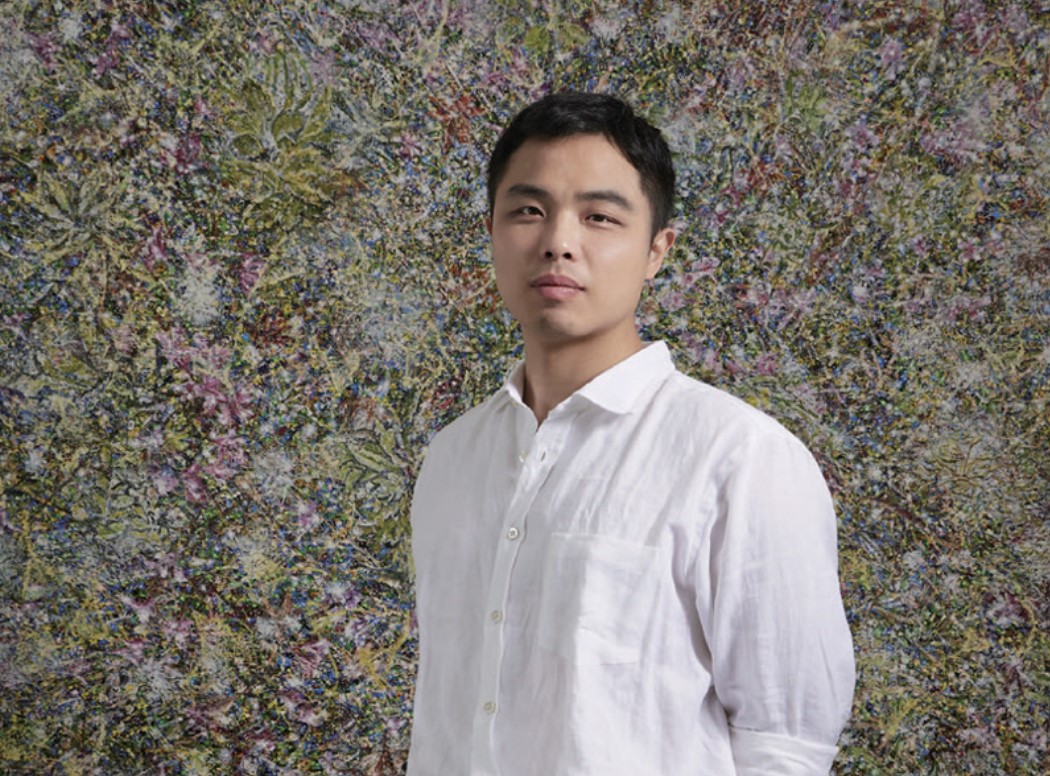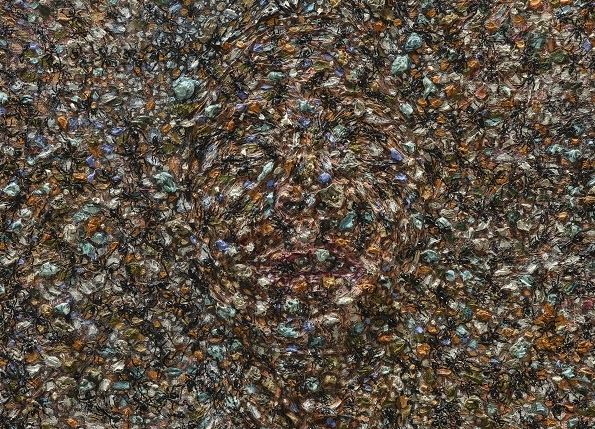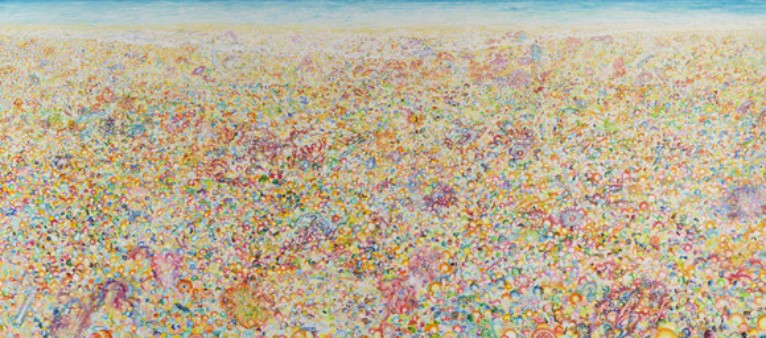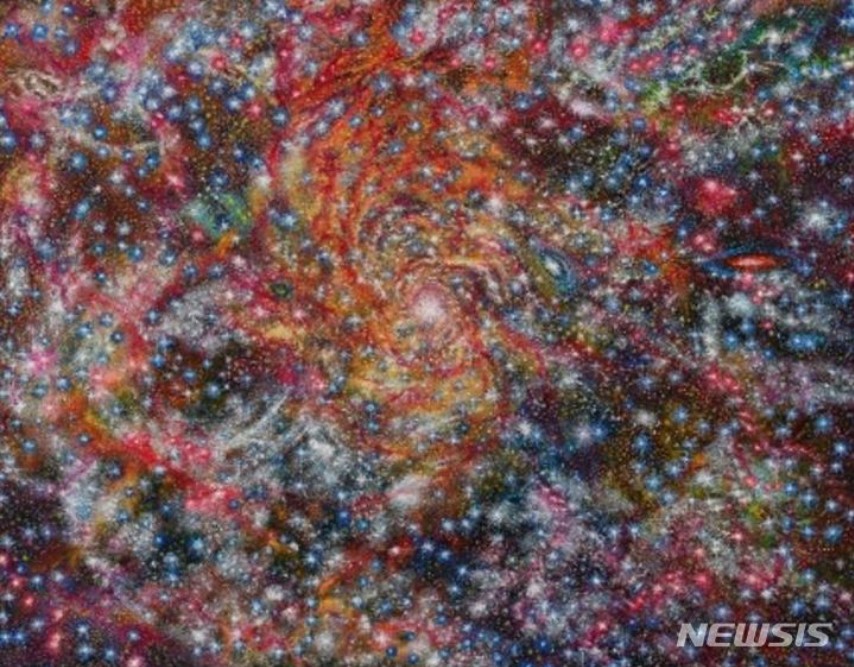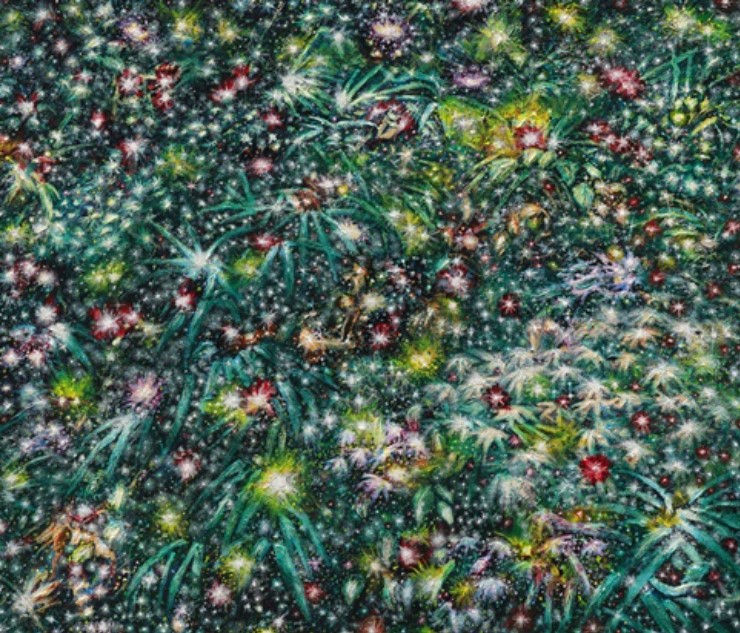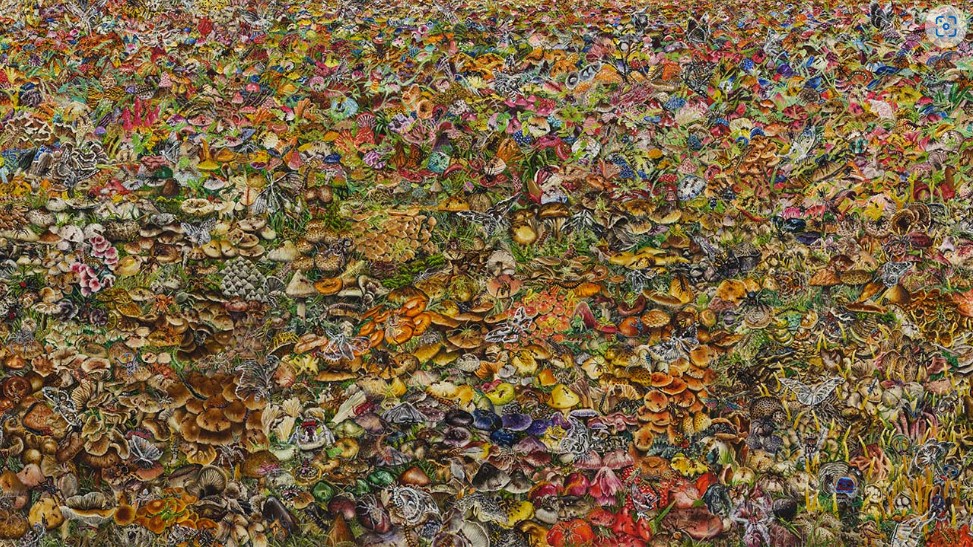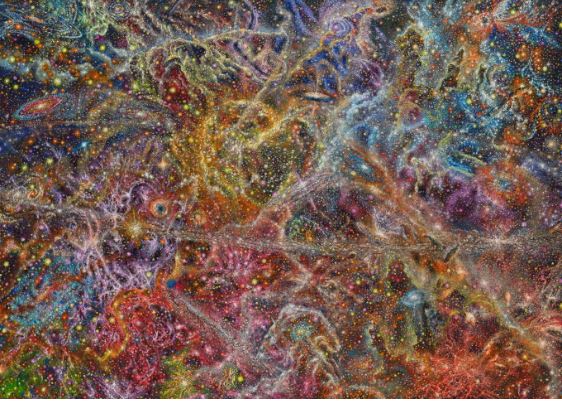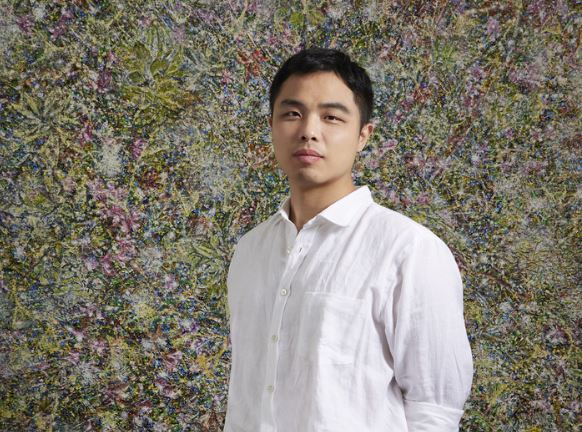허수영의 작품들은 오랜 시간 누적된 관찰과 상상과 사유와 채색과 드로잉으로 구성되어 있다. 작가는 스케치 없이 곧바로 대상을 모색하는 붓질의 연속, 재현을 지향하지만 그 과정에 재현하지 않는 지점에 도달하려 한다. 시간이 말려들어가 압축되고 충전되어 운동이 소멸된 정지된 이미지, 그리고 이 이미지를 바라봄으로써 다시 시간성이 말려 나온다. 이완 운동이 생성되는 순간의 이미지는 작가의 정신을 빨아들인다. 여기서 시간성은 촉각 되는 이미지로 나타난다. 그 과정에 우리는 작가가 경험하는 체험의 깊이를 잠시 엿볼 수 있다.
우주와 세계를 가로지르고 확산하고 응축하는 시간성은
우리를 매료시킨다. 작가는 무수한 시각과 시간성이 가로지르며 복수의
이미지의 지평들을 재현하며 나아간다.
오직 그림으로만,
시각으로만 보여지는 차원을 향한다.
작가는 재현하고 재현하고 재현함의 반복을 통해 재현의 밖으로 나아가는 방식으로 한 걸음씩 전진한다.
「춤추는 빛, 황홀경의
세계」 中 발췌 | 김노암(미술평론가)
허수영은 사라지고 도래하는 자연, 미시적이고 거대한 자연에서 받은 체험과 비현실적 체험을 경계 없이 한 화면에 겹쳐 올려내고 있다. 그로 인해 그림은 구상이자 추상, 재현과 비재현, 이미지와 질료, 현실과 초현실, 그리기와 지우기, 기억과 망각 사이를 끊임없이 반복하면서 회귀한다. 그렇기에 작가가 그려낸 풍경은 자연을 묘사한 것이 아니라 자연을 연상시켜주면서도 지금껏 보지 못했던 이상하고 낯선 자연, 생명체를 떠올려준다. 허수영이 보여주는 생경한 자연 이미지는 인간에 대해 표상적으로 정립되는 자연이 아니라 ‘모든 것을 발생시키는 근원적 힘으로서의 자연’이자 카오스로서의 자연과도 같다. … 그가 중요시하는 그림이란 언어화되거나 묘사하지 않는 그림으로 “재현이 아니라 창조”인 그림이다. 그리고 이러한 그림이야말로 그가 원하는 ‘진실한 그림’이자 진정한 회화에 근접하고 있다는 생각이다.
「허수영- 재현이
아닌 창조로서의 그림」 中 발췌 | 박영택(경기대교수,
미술평론)





